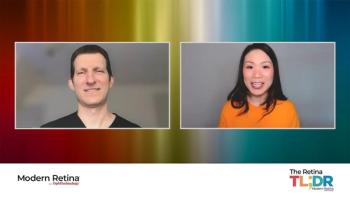
Aaron Nagiel, MD, PhD, gives interview on the impact of retinal gene therapy procedure conducted at Children's Hospital Los Angeles
This interview comes at the Children's Hospital Los Angeles team celebrates its 100th retinal gene therapy procedure.
Aaron Nagiel, MD, PhD, gave an interview discussing the work that he and the team at Children’s Hospital Los Angeles (CHLA) have been doing in the retinal gene therapy space. This interview comes at the team celebrates its 100th retinal gene therapy procedure.1
Since 2018, Nagiel and his team at the Vision Center of CHLA have been treating these patients with the gene therapy, Luxturna, for the treatment of Leber congenital amaurosis (LCA). CHLA was the first center on the West Coast to administer this treatment after it was approved by the Food and Drug Administration in 2017.1
In the interview1, Nagiel shared how he found a path to working in pediatric retinal diseases and his firsthand experience seeing patients improve following treatment at CHLA. When it comes to determining if treatment is right for a patient, he shared the process that CHLA follows including the following eligibility criteria for treatment with Luxturna. He said, “patients must be older than 12 months and show mutations in both copies of a gene called RPE65. If a patient has one healthy copy of this gene, they don’t have the disease. We lean on CHLA’s Center for Personalized Medicine for this part of the screening. CHLA is one of the only pediatric medical centers with in-house genomic and molecular pathology support. This is critical because more than 300 genes can cause these retinal degenerations. We need to be sure beyond a doubt that patients have this particular form of LCA before we treat them.”
Nagiel spoke to the impact of preserving and restoring vision are significant. He said, "Some patients start observing significant improvements within the first week. They’re essentially seeing things that they could never have seen before. I've had patients who, during their first follow-up visit, can make out the fish in the fish tank for the first time. Parents have also told me the stories of their kids noticing a bird flying, or a cloud in the sky, for the first time in their lives.”1
As this interview reflected on the progress in pediatric gene therapy thus far, Nagiel was also asked to comment on the future of the gene therapy space: “We continue to recruit people for several clinical trials advancing the leading edge of gene therapy treatment. There are a number of adults, for whom gene therapies weren’t available when they were young, who come to CHLA for treatment and also participate in these trials. Today, these diseases are often diagnosed in childhood, so there's no reason we should even be treating adults in the future. In 10 years, we hope that all patients with these diseases can be identified when they’re young, treated when they’re young—and experience life-changing vision improvements for their lifetimes.”1
Reference:
1. Children’s Hospital Los Angeles Celebrates 100th Retinal Gene Therapy Procedure. Children’s Hospital Los Angeles. December 6, 2024. Accessed December 9, 2024. https://www.businesswire.com/news/home/20241206063665/en/Children%E2%80%99s-Hospital-Los-Angeles-Celebrates-100th-Retinal-Gene-Therapy-Procedure
Newsletter
Keep your retina practice on the forefront—subscribe for expert analysis and emerging trends in retinal disease management.
















































